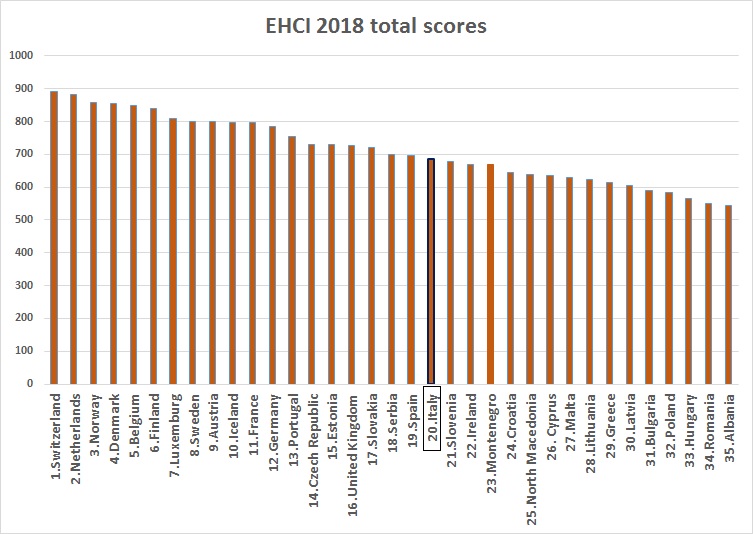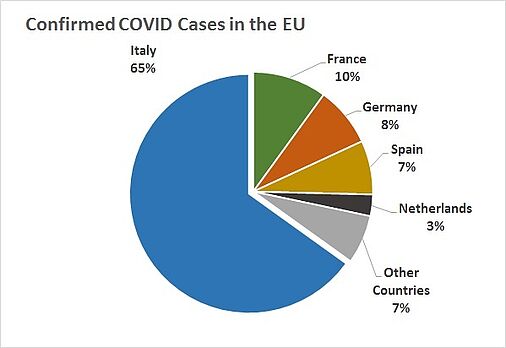The healthcare system of the EU country most afflicted by the coronavirus, Italy, has severely suffered from neoliberal cuts and privatisations in recent years. And the health emergency has greatly accelerated the imminent arrival of the next economic emergency. With it we are facing a watershed moment.
It goes without saying that, for the present, all efforts have to go towards combating the virus and ‘helping’ the authorities. And yet it is necessary to reflect on the situation we are in.
Can we say that the idea of leaving the ‘management’ of something as enormous as globalisation up to market forces, to corporations, to the private sector, to the producers of big data is sheer folly?
The situation is dramatic. There is no doubt that the ‘health’ of the planet and of people have by now been put at risk by climatic and social degeneration; the greenhouse effect and poverty.
Even a phenomenon like the coronavirus shows how much a worldwide public health system not structured by neoliberal policies is needed, together with more democracy at a global level. Unfortunately, the reality is quite different.
Healthcare in the EU
The right to healthcare is a central feature of the European social model. It is guaranteed by the public sector, and sustained by tax equity. It has intervened against factors causing harm and in environmental toxicity. But in these thirty years the right to healthcare has not become a factor in the construction of the new European integration. Healthcare remains an area delegated to the Member States. Europe sets some standards but it does not set active policies. In addition, there are the budget constraints, which have great impact. And there are about fifty warning letters that have been sent by EU authorities to the states, enjoining them to reduce healthcare costs.
In fact, as is apparent in a report by the highly respected Health Consumer Powerhouse, which uses 46 assessment parameters, European data show that the differences among the states and within the states have persisted and have even worsened. It is as if Europe were built on a model of differentiated autonomy (higher degree of autonomy for states with a balanced budget), entrusting itself to the market and the private sector (with perhaps the proposal of private cross-border health insurance).

Source: Euro Health Consumer Index 2018, own modification
Note: The Euro Health Consumer Index (EHCI) 2018 analyses national healthcare on 46 indicators grouped in areas such as Patient Rights and Information, Accessibility, Treatment Outcomes, Range and Reach of Services, Prevention and use of Pharmaceuticals; the minimum score is 333, the maximum 1000;
Among the EU states, the Netherlands, “the only country which has consistently been among the top three in the total ranking of any European Index the Health Consumer Powerhouse has published since 2005”, Belgium and the Nordic countries lead the ranking, followed by most of the Western and Southern countries as well as the best performers in the CEE region, the Czech Republic, Estonia and Slovakia.
Situation in Italy
Let’s take a closer look at the country most affected by the coronavirus, Italy, which is only twentieth in the ranking of the Health Consumer Powerhouse.

Source: World Health Organization Europe, own modification; 09.03.2020
Aside from the very sharp regional differences within Italy, which is one of the reasons for the position in the ranking, the country as a whole has undergone 37 billion in cuts within 10 years. Italy spends 2,545 euros per capita on healthcare in comparison to Germany’s 5,056. In 2017, the ratio of nurses per inhabitant was 6.5 per 1,000 in comparison to the European average of 8.4. For hospital beds the average was 3.2 (it was 3.9 in 2007) in comparison to 8 in Germany.
On the other hand, the 2015 legislative Financial and Economic Document, the main guideline for financial and economic planning set by parliament, was not respected in the expenditure provisions because spending was still tied to an increase in GDP, which did not occur, and this leads one to suspect that the same thing will happen with the 2022 budget. In fact, we have seen a fall in recent years from 6.6% to 6.4% of GDP for the public health system. And the percentages remain tied to GDP growth, which almost never occurs.
The result is that per capita healthcare expenditures in Italy, including both public and private, are 3,428 US dollars as against the OSCE average of $ 3,980.
The result also is that, for instance, the number of hospitals have declined from 1,165 in 2010 to 1,000 in 2017 (-14.6%), the number of hospital beds has gone from 244,310 to 211,593.
Cuts, privatisation, regional fragmentation, supported by both the centre-left and centre-right, are among the viruses that have combined to produce very dire consequences.
Tighter straitjackets?
With an economic emergency now added to the health emergency, Italy fears a recession. In this respect, too, Europe needs to become something very different from what it has been up to now. The situation is rapidly evolving to take on a European and global dimension. In this respect the current economic model appears completely inadequate in the face of such a crisis.
Even worse are the austerity straitjackets imposed by the EU. The expected economic parameters are unachievable. Loosening them is necessary but not enough. New parameters aimed at people’s well-being are needed.
It is clear that we are looking at a watershed, which must teach us something. Now let’s treat the virus but then we have to change things.